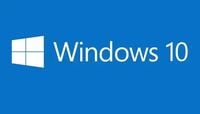As the "end of life" for Windows 10 approaches, businesses are being urged to take immediate action to prepare for the impending transition. Microsoft has announced that it will officially cease support for Windows 10 on October 14, 2025, meaning that after this date, the company will no longer provide bug fixes, security updates, or any form of technical assistance for the operating system. This decision has raised alarms among technology experts, who warn that organizations must plan their transition to a new operating system, such as Windows 11, to avoid significant security risks.
Roy Shelton, CEO of Connectus Business Solutions, emphasizes the urgency of the situation, stating, "While October may sound like a long time away, planning now makes perfect sense to ensure that there are no major barriers to switching over to the latest version." His warning comes in light of research from Which?, which found that 28% of businesses are still relying on Windows 10 despite the looming deadline. This statistic underscores the potential risks that organizations face if they do not act promptly.
One of the primary challenges businesses may encounter during this transition is hardware compatibility. Shelton points out that older devices might not meet the requirements to run Windows 11, potentially increasing the cost and complexity of the upgrade process. He notes, "The larger the organization, the greater the risk of unforeseen issues arising, of course, so it’s wise to plan a path to an upgrade." This highlights the importance of proactive planning as organizations navigate the complexities of upgrading their systems.
Using outdated software poses serious cybersecurity risks, as the absence of security patches will leave systems vulnerable to malware and virus infections. Shelton warns that businesses may face devastating ransomware and malware attacks, leading to data loss, operational downtime, and financial repercussions. He stresses the importance of addressing these risks, stating, "Running outdated software brings significant cybersecurity risks and can result in performance issues, as well as risking potential problems with regulatory compliance." This reality is further compounded by data indicating that organizations using outdated software are twice as likely to experience a data breach.
To help businesses navigate this critical transition, Shelton offers several key pieces of advice:
- Plan ahead now: Begin planning the transition to a new operating system or hardware well in advance, considering hardware compatibility and data migration.
- Check hardware compatibility: Verify that existing hardware supports Windows 11 to avoid unexpected costs for replacements.
- Plan for training: Allocate resources for employee training to ensure a smooth adoption of the new operating system and its features.
- Budget for hardware upgrades: If necessary, budget for replacing older hardware that is incompatible with the new operating system.
- Back up your data: Implement a robust data backup strategy to prevent data loss during the upgrade or hardware replacement process.
- Partner with experts: Consider seeking assistance from IT specialists experienced in OS migrations to ensure a successful and efficient transition.
As the deadline approaches, the importance of these preparations cannot be overstated. Businesses that wait until the last minute may find themselves facing significant challenges, including increased costs and potential security vulnerabilities. The risk of unauthorized access to outdated systems and the potential compromise of connected devices only heighten the need for immediate action.
In conclusion, organizations must take the necessary steps to prepare for the end of support for Windows 10. By planning ahead, checking hardware compatibility, budgeting for upgrades, and seeking expert assistance, businesses can navigate this transition successfully and mitigate the risks associated with outdated software. The clock is ticking, and proactive measures are essential to ensure a secure and efficient upgrade to a new operating system.

